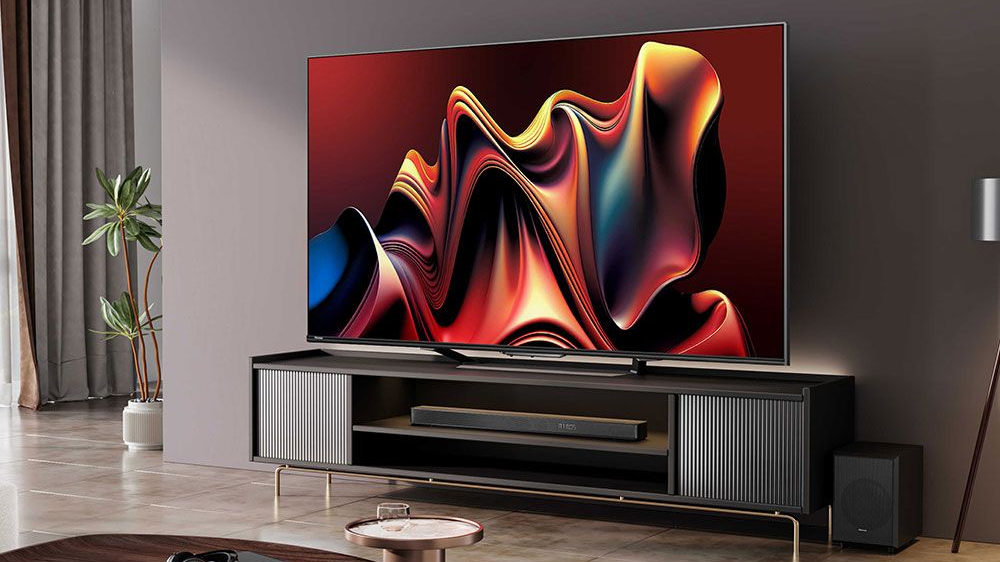
Buying a new TV can sometimes feel like a minefield. There are the best OLED sets, the best LED-backlit LCD sets – but even Mini-LED versions of those – and various acronyms and marketing expressions to wade through. It's worth it, though, to match your expectations with the right technology – and at the right budget.
Roughly speaking, the best TVs can be broken into two camps: OLED and LCD/LED. The former is an organic material, where each 'pixel' self-illuminates, providing hyper-precision and significant contrast. The latter is inorganic, dependent on illumination – whether side- or back-lit, in zones or full array – for the degree of brightness and precision it can deliver.
As the technologies have advanced, sub-sections have appeared. The size of LEDs used in backlight arrangements has gotten smaller, hence 'Mini-LED', and that means more precision and control, for greater brightness and less light bleed. Other technologies, such as QLED (or Quantum Dot), have added additional panel layers that emit different colour frequencies – to expand the palette and vibrancy on offer.
Well, now there's a new technology in town: RGB Mini-LED. Introduced at CES 2025 by Hisense, it's a further step forward for the Mini-LED solution. But what exactly is the RGB version, why does it matter, and what does it mean for TVs in 2025?
1. What is RGB Mini-LED?
Images are combinations of red, green and blue – max all of those out and you get white, remove them all and you get black, with the variance in between delivering many millions of colour permutations. That happens per pixel in all TV output as it stands.
RGB Mini-LED adds individual red, green and blue LEDs within an optical lens as part of the Mini-LED backlight system – with tens of thousands of them in an array. This means not only does the blacklight control the brightness and precision, but also the colour volume output too.
2. What benefits does RGB bring?
In the case of Hisense, which uses the brand's Hi-View AI Engine X artificial intelligence engine, that means each degree of red, green and blue can be controlled – allowing for incredible colour purity.
RGB Mini-LED allows more of the BT.2020 colour space to be available compared to normal systems, for example, meaning you'll be able to see a wider gamut by eye. Beyond this, however, that AI engine can also enhance or diminish specific colours and at various brightness levels – which could open the door for more accurate or more vibrant visual experiences.
Furthermore, the option to reduce blue light emissions for more comfortable viewing – something many phones and tablets already offer in low-light conditions – is available, thanks to the ability to control the blue lightwave independently. This means greater comfort even with greater brightness to images.
3. Which TVs will offer RGB Mini-LED?
RGB Mini-LED is brand new, hot off the press, and Hisense's reveal thus far only positions the technology in its latest 116UX TV – also revealed at the CES 2025 show in Las Vegas.
That's a specialist TV: a giant 116-inches across the diagonal, with 10,000 nits of peak brightness and 40,000 dimming zones from its Mini-LED system.
As with any technology, however, it'll surely only be a matter of time before Hisense trickles it into smaller-scale and more consumer-friendly products in the future. And, daresay, for other makers to bring out their own equivalent technologies too.







